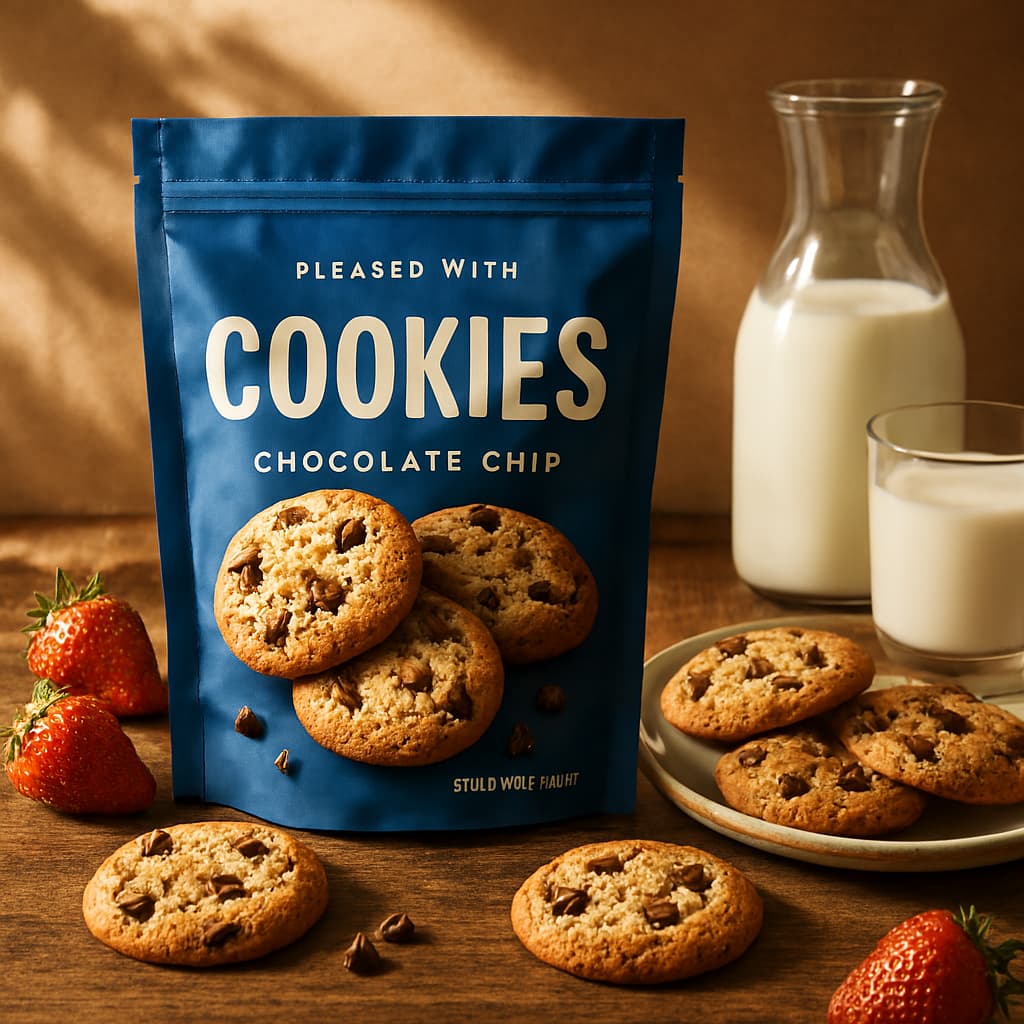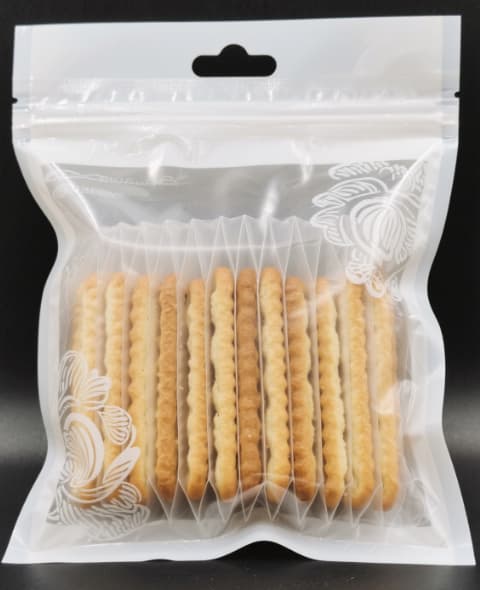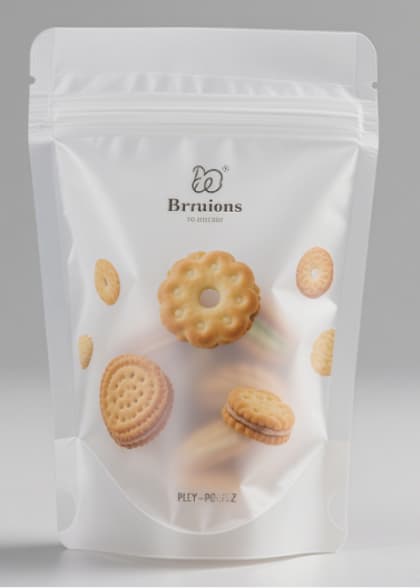Cookie Packaging Trends for 2025: Sustainability, Innovation, and Protection
2025-09-04
Customers adore cookie in the food business because of their convenient and crispy texture. Packaging, including bag design and material selection, is the "first line of defense" for biscuit quality and consumer experience, and it has a direct impact on shelf life, shelf appeal, and brand reputation. Nowadays, cookie packaging has changed from having a single "protective function" to focusing on "practicality + aesthetics + sustainability" due to a variety of consumer expectations and the growing acceptance of sustainablity ideas. The business now uses a wide variety of cookie packaging bag styles and materials that are suited to various situations.Let's discover together the cookie packaging trends for 2025.
Adapting to Varying Needs: Four Common Packaging Bag Types Address Every Consumption Situation
There are many different types of cookies, ranging from little single packs to upscale gift boxes. Packaging forms must meet specific requirements depending on the consuming scenario. The market is dominated by four cookie packaging bag varieties that precisely fulfill the storage and display requirements of different cookies.
The most popular basic option is 3 side seal pouches (flat pouch) because of their "cost-effectiveness." Widely used for tiny-sized products like soda crackers and thin crisp cookiess, their straightforward structure—sealed simply at the top, bottom, and two sides—allows them to be easily configured as individual small packs or single large bags. The small design and great manufacturing efficiency of 3 side seal pouches make them perfect for single-serve snacks and items that must be carried with you at all times. The primary option for reasonably priced biscuit brands, the individual tiny packs also aid in regulating single-serving portions and avoiding secondary contamination.
Family-sized packs are increasingly using stand-up pouches (with zippers) because of its "convenience + display appeal." These pouches have a sturdy base that allows them to stand on shelves by themselves. They successfully withstand moisture and preserve crispness when paired with resealable zippers, prolonging the cookie's shelf life. They work well with 100–200g shared goods, such as digestive biscuits and cookies. When standing on shelves, stand-up pouches are more visually appealing, and their zipper design accommodates customers' frequent opening needs. The stand-up pouch market is expected to expand at a compound annual growth rate (CAGR) of 8.0% through 2030, from its 2023 valuation of USD 30.7 billion, according to Grand View Research.
With their side folds, gusseted pouches have emerged as the "protection expert" for delicate cookie. By cushioning external forces, the "accordion-style" folds on both sides help lessen breakage during storage and transit. They have a greater capacity when unfurled, which makes them perfect for delicate or lengthy items like egg rolls and finger biscuits. In order to increase product visibility and enlarge the hanging display scenario in convenience stores, some designs also incorporate hanging holes.
The "standard configuration" for luxury and gift markets is composite packaging, which consists of an inside bag and a paper box. While the interior cookie packaging bag—made of PE or PET/PE composite film—blocks moisture and oil, the exterior paper box (rigid or folding box) can be printed with beautiful patterns to communicate brand texture and festive emotions. This twofold protection guarantees the cookie texture. This packaging is currently widely used by imported cookies and holiday gift-set biscuits, and it is a crucial tool for firms looking to increase premium cookie brand value.
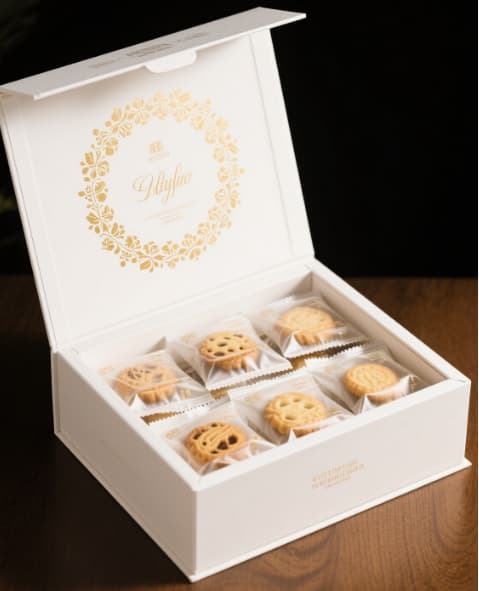
Essential Roles: Five Packaging Material Mixes Preserve the Quality of the Cookies
The capacity of the commercial cookie packaging to keep out oxygen, moisture, and oil is a major factor in the cookies' crispy texture and shelf life. Five primary material combinations now dominate the biscuit packaging market. These combinations use single-layer or composite films to protect the biscuits' quality.
PE (Polyethylene) film dominates the individual cookie packaging market with its low cost advantage. PE is the first choice for individual cookie packs and inner moisture-proof bags in paper boxes because it is a single-material film that is flexible, resistant to low temperatures, and provides mild moisture resistance and sealing. This is especially true for items with a shelf life of less than three months.
Aluminum foil and PET/AL/PE composite film serve as the "guardian" for high-oil cookies and long-term storage. In addition to having exceptional oil resistance, the inner layer of aluminum foil entirely prevents light, oxygen, and moisture, so avoiding cookie oxidation, moisture absorption, and oil penetration. It is the primary option for upscale long-term storage individual cookie packaging and works well with goods like cookies and sandwich biscuits that have a shelf life of more than six months.
In this aesthetics-focused industry, BOPP/PE composite film prevails due to its excellent transparency. The color and design of the cookie are plainly visible through the exceptional clarity of the outer BOPP layer. It provides better cost-effectiveness than PET/PE composite film when combined with the inner PE layer's moisture-proof and heat-sealing properties. Therefore, it is the commercial cookie packaging of choice for aesthetic-focused products such as soda crackers and thin crisps, as it preserves the natural appearance that consumers expect.
The outer layer of paper materials follows high-end and ecological trends. Recyclable materials that naturally exude a "natural and healthy" vibe include kraft paper and white cardboard. They frequently serve as gift box outer packaging when combined with interior PE films for moisture protection, improving brand texture and adhering to international eco-friendly packaging standards. In specialized markets like handcrafted and organic biscuits, their acceptance rate is rising quickly.
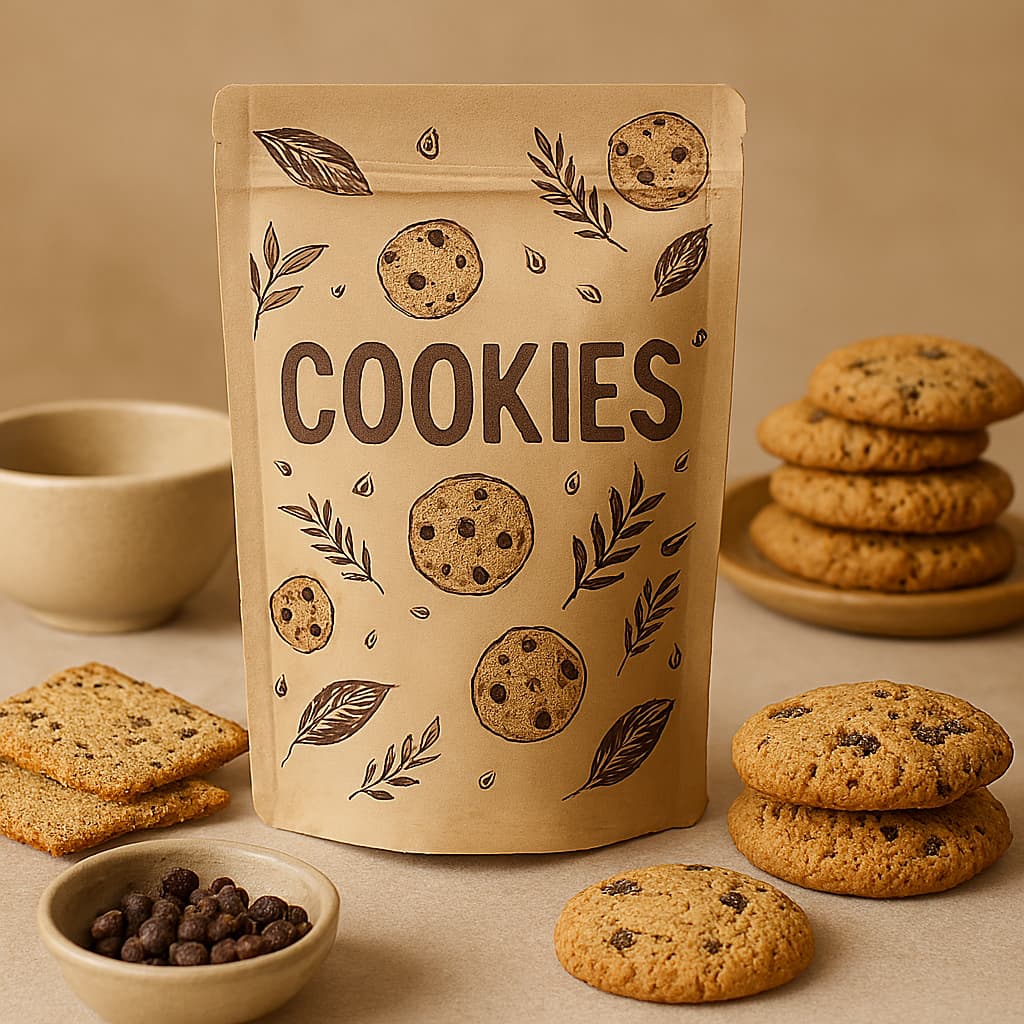
Innovation Trends: Packaging Upgrades Accelerate Innovation Driven by Environmental Protection and Functionality
The cookie packaging industry is entering a new phase of sustainability and innovation due to stricter environmental rules and increased consumer expectations. Manufacturers are updating designs to enhance use and better preserve product integrity from a functional standpoint. For instance, leak-proof sealed versions of stand-up pouch zippers are evolving. These design improvements satisfy consumer desire for packaging that blends practicality, durability, and visual appeal while also preserving cookie freshness and improving shelf presence.
At the same time, the industry is changing due to eco-friendly materials. In response to customer demand for sustainable options and regulatory restrictions, several top brands are making significant investments in biodegradable PE films, recycled PET materials, and totally recyclable packaging solutions. Strong evidence supports this shift: Future Market Insights projects that the biodegradable food packaging market will expand at a compound annual growth rate (CAGR) of 5.6% from USD 238.8 billion in 2025 to USD 391.3 billion by 2035. These figures demonstrate that sustainability is becoming a mainstream development driver rather than a specialized endeavor.
Additionally, international policy changes are speeding up the transition. According to the Sustainable Packaging Coalition, 2025 is a crucial year for Extended Producer Responsibility (EPR) laws, which would compel companies to adhere to strict eco-design and recyclability guidelines. This means that for cookie makers, using recyclable or biodegradable packaging is important for compliance and long-term market competitiveness, not simply for brand image.
Conclusion
The combined emphasis on sustainability and functional innovation will continue to define competitive advantage as the cookie sector in 2025. Packaging is now more than simply a protective layer; it is a clear representation of brand value and market positioning.
The biscuit brand must also quickly adjust to worldwide trends toward biodegradable packaging materials, recycling, and compliance with changing Extended Producer Responsibility (EPR) regulations. Adopting these modifications helps snack businesses meet the long-term sustainability standards set by authorities and markets while also preserving product quality and bolstering consumer trust.
We at RJ PACK are aware of these possibilities and difficulties. Being a professional manufacturer of flexible packaging bags, we are experts in providing food packaging solutions that blend excellent protection, aesthetic appeal, and environmentally friendly design. With years of experience in food packaging, including for cookies, snacks, coffee, and pet food, we consistently makes investments in cutting-edge biodegradable packaging materials and contemporary production lines. We collaborate with international food brands to develop packaging that strikes a balance between sustainability, compliance, and quality preservation in order to satisfy our clients' packaging requirements.
Selecting the best packaging partner is essential for cookie brands to survive the intense market rivalry. RJ PACK is dedicated to becoming that reliable partner by providing cookie packaging solutions that support your snack brand.


